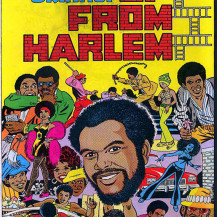


In 1950, alongside her Patty Jo run, Ormes rebooted her Torchy character by way of Torchy in Heartbeats. Now, the dolls are a hot collector’s item because of their rarity. The Patty Jo doll also became a hit with both Black and white kids during the height of its popularity. Like the comic character, Patty Jo looked like a regular Black girl and had several fancy wardrobe options to boot. First, it was far different from most Black dolls at the time, which leaned into mammy and Topsy stereotypes. The doll became available just in time for Christmas 1947 and broke boundaries in several ways. Ormes loved covering different social subjects, but drawing was her ultimate passion. Her time with the Courier included stints as a proofreader, editor, and freelance writer. She graduated in 1930 and by this time Ormes was covering boxing matches for the Pittsburgh Courier, a widely popular Black newspaper. Her early sketches of students and teachers were the foundation of her later cartoon works. She began writing and drawing during high school, eventually becoming the arts editor for the Monongahela High School yearbook in 1929. Ormes, born Zelda Mavin Jackson, grew up in and around Pittsburgh, Pennsylvania. Her rise to comic fame is a story that comic lovers should know. These women stand on the shoulders of Jackie Ormes, the first Black woman cartoonist and creator to have her own comic strip. The rise of webcomics and independent publishing has also opened doors for many women comic creatives to distribute art with lower barriers of entry. Women like Nilah Magruder, Eve Ewing, Stephanie Williams, and Roxane Gay are taking over the Marvel universe and bringing fresh takes on an array of Black comic characters like Ironheart and Monica Rambeau. The world of comics continues to expand and become more diverse.


 0 kommentar(er)
0 kommentar(er)
